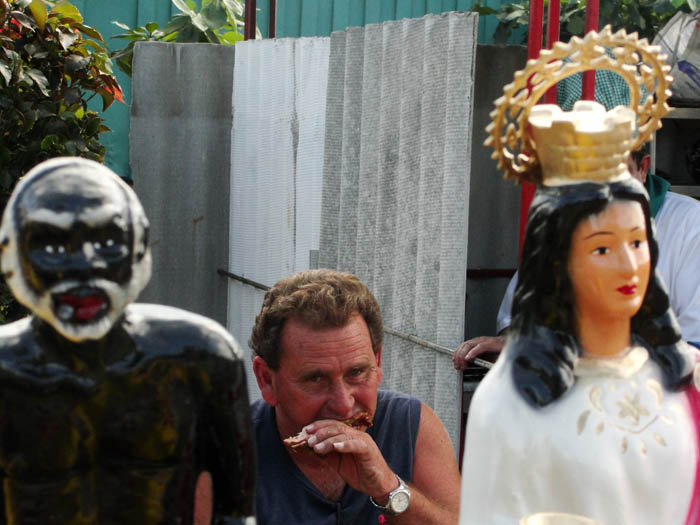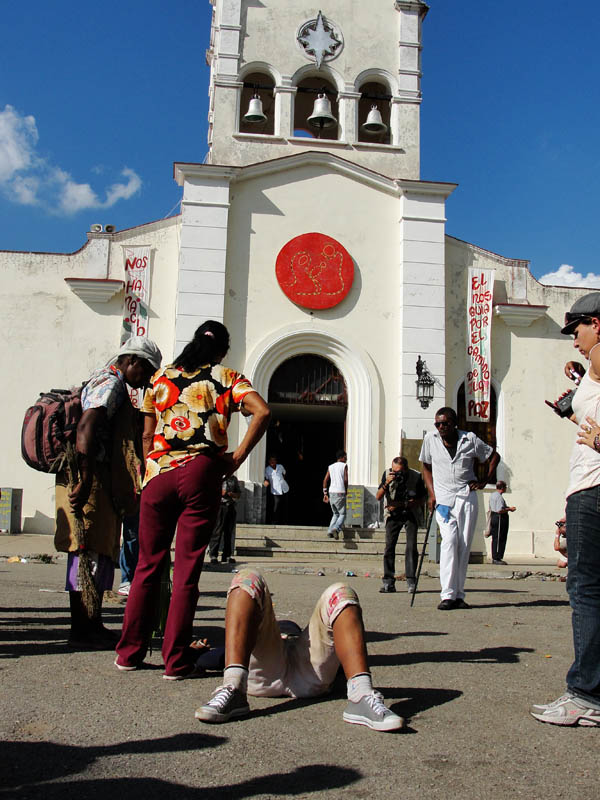Pilgrimage to Havana’s El Rincon Chapel
Photo Feature by Elio Delgado

HAVANA TIMES, Dec. 23 – Every December 16, thousands journey along the road that leads to the village of El Rincon, several miles outside of the Cuban capital. They are believers who want to be present at the church at dawn the following day to celebrate the parish’s San Lazaro Day festivities.
For some this is a service to worship before Saint Lazaro, for others it is to pray to his Yoruba counterpart: Babalú Ayé, the Afro-Cuban “orisha” (god or saint) that cures sickness. But in either case, this service will exceed the scale and expressiveness of that of the Virgen de la Caridad, Cuba’s patron saint: up to 50,000 Cubans make this journey.
Although this observance will take place in a Catholic chapel, many will invoke the African deity. This act goes back to the time when San Lazaro was the namesake of the leper colony located outside of the limits of the city, but where today lays Antonio Maceo Park in Central Havana.

Due to protest by society women, the facility was first moved to the town of Mariel, but in 1917 it was permanently established as the San Lazaro hospital in El Rincón.
Ever since then, the annual pilgrimage to this shrine has been the only public demonstration that is not authorized or planned by any government in power and no one prohibits it.
This year one could note the strong presence of women of all the ages, some praying with small children in their arms. And there was no lack of selling – everything from religious products to food, sold privately as well as by the State.
I asked people why they make these sacrifices to get to El Rincon, walking and even crawling.
They responded saying it was for their health, a son in prison, for prosperity, to make it through an operation, to help leave the country… There were lots of different reasons, to the point that institutions of sociological study are conducting surveys.
Click on the thumbnails to see all the photos in this gallery












